Gyeongbokgung Palace night view
Bukgeoldo
Bukgeoldo is the map of Gyeongbokgung palace. Bukgeol means Gyeongbok palace, so the map of Gyeongbokgung's map is called Bukgeoldo. Gyeongbokgung palace is getting restored on the basis of Bukgeoldo. Two editions have remained until now, so they are the priceless source. The exact time that this map made is unknown but people are guessing that this was made in 1907.
Japanese Occupational Period – Destruction and Restoration of Gyeongbokgung Palace
King Gojong rebuilt Gyeongbokgung palace in 1968. However, Gyeongbokgung palace gets destroyed again during the Japanase occupation. In 1910, Daehan empire was forced to sign an annexation treaty and Japan colonized Daehan empire. When Korea was in Japanese colonial era, the Japanese broke the second gate Heungryemun and made the Japanese General Government Building in the place. Japan destroyed lots of buildings at that time, so only 10% of the palace was left after Korea’s independence.
Gyeongbokgung Palace now
Now, we can see 20 % of the Gyeongbokgung palace. It was destroyed by Japan and also Korean war. In 1995, Korean heritage began to restored. So, 20 % of the original palace are restored now.
Gwanghwamun
Gwanghwamun is the main and south gate of the Gyengbokgung palace. Gwanghwamun gate did not have a name until king Sejong and began to be called Gwanghwamun after king Sejong. Gwanghwa means the brilliance of the king shines on the whole country and all the people. There are three entrances in the gate and the middle entrance has a red phoenix painted on the ceiling because the red phoenix is a mythological animal in charge of the south as one of the four directional guardians in the Chinese constellations. Gwanghwamun gate is the largest in size magnificent in style, showing that Gwanghwamun is the main gate of the main palace in Joseon dynasty. In front of Gwanghwamun gate, there were six ministry streets and a market called Unjonga. Gwanghwamun gate has some sad stories. During the Japanese occupation, Gwanghwamun removed of its function as the main gate and moved it to where the National Fold Museum is currently located. Gwanghwamun gate was restored in 2010 again and have the look and shape like now.
Haechi
Haechi were placed in front of the palace since they were known to expel fires.
The place where Haechi were first in front of the office of the inspector-general which was about law. Haechi had a symbol of the law so the officials of the inspector General had Haechi embroidered. Haechi or Haetae is an imaginary creature that appears in a legend in ancient China. 해치 could know who is evil and who is not, so they put 해치 in front and beside of the Gwanghwamun gate.
Yeongjegyo
Yeongjegyo is a bridge called Yeongjegyo. Yeongjegyo means bridge in Korea.
This bridge marks the boundary by the ordinary and sacred which is the king and the royal family. The stream that flows under the bridge purified the spirits of the people entering the palace, which protected the palace from evil spirits.
Cheonrok
There are monster carvings on each side of the Yongjegyo bridge and they are called Cheonrok. These guardian animals were another symbol of casting out the devil spirits.
Dapdo
Dapdo is in the middle of the stairs through which the king was carried in the sedan chair to go to Geunjeongjeon. There are phoenix carved on Dapdo which has the hope of the king to become a wise king and to make the world a better place to live.
Geunjeongjeon
Geunjeongjeon is the main and throne hall of Gyeongbokgung palace. In Geunjeongjeon, lots of ceremonies such as coronations, royal weddings, and receptions for envoys were held. Geunjeongjeon looks like a two story buildings, but this is just a tall building with a high ceiling. Geunjeongjeon means to rule Joseon diligently. Every four times in a month, there was an assembly in front of the Geunjeongjeon.
Bakseok
There is a front yard of Geonjeongjeon where official events were held. The front yard is paved with wide and flat stones which is called Bakseok. The surface of the stones are rough so the people won’t slip, reflect the lights to protect eyes and had good drainage.
Samdo
Samdo is a path that is divided into three parts. The middle path was for the king to walk. The right side was for civil officers. The left side was for military path. If anyone walked on the middle path, that person would gat hit by a cudgel 80 times because it means that the person who went over is looking over the king which is banned because people don’t know what will happen.
Pumgyeseok
Pumgyeseok is a ranking stone in front of Geonjeongjeon. Pumgyeseoks are on each side of Samdo and they look like tombstones. Pumgyeseok inform officials of where to stand according to their status. Civil officers stood on the east and the military officers stood in the west side. There are 12 Pumgyeseok in each side.

Chinese Zodiac
On the platforms of Geonjeongjeon, there are animals that protects the King. Four guardian animals representing each direction are carved in pairs on the newel post of the four staircases belonging to the upper stone platform. Chinese zodiac animals are also placed on the newel posts along the upper and the lower stone platforms.
Deumeu
This big jar looking thing is called a Deumeu. Deumeu means a wicle and big jar’ in Korean. It has a shamanistic meaning like monster carvings on the Yeongjegyo. Deumeu keeps water insideto protect the palace from fire. People believed when the spirit of fire comes to the palace, and when it reflects itself, it would be surprised by it’s own look and run away.
awning ring
Many of the people will think that the marquee ring every where are for horse reins. However, according to the pictures we have of Geongbokgung palace, these rings were used to fix the marquee down to keep the sunlight off at the royal ceremonies.
Inside Geunjeongjeon - Ilwolobongdo
There was always a folding screen behind the king of Joseon. This folding screen’s picture has a meaning for each of every picture. The sun and moon drawn on the top means the king and queen for the negative and positive power which make up the universe which is the Yin and Yang theory. The five mountains meant the important duties of Confucianism and the five famous mountains in Korea. The other pictures such as pine trees meant royal officials and the sea means the people of Joseon dynasty. Ilwolobong shows us the wish to rule the country by Confucianism while balancing the power of Yin and Yang.
Inside Geunjeongjeon – Ceiling Hwangneung
If you see the ceiling of Geunjeongjeon, you can see two dragons. These two yellow dragons mean the middle of the world which means the king. There are seven toes on the dragons’ feet, if you look closely. This dragon is called the seven-toes dragons because the number of its’ toes means the powerful kingship.
Jeong, incense-burner
This incenses were used in important ceremonies. Normally, when the ceremony starts, the king burn the incense burner and when the ceremony ends, the turn off the incense.
Joseon was a country based on Confucianism so they thought doing ceremonies and praying was very important. Kings rule people for the sky, so burning the incense has a meaning of talking with the sky. When they had this ceremony they did it quietly and solemnly.
Busi
This is called a Busi which is a net that covered the eaves, so they can prevent birds from nesting on the building. The birds could not live here. So, they could keep the building clean from the bird droppings.
Dancheong
Dancheong is the colorful decoration on the rood part. Dancheong decorates wooden buildings with patterns of different colors and prevents the wooden tree from rotting. The patterns were drawn according to a given rule with the colors of blue or green, white, red, black and yellow. Blue and green symbolize ‘east’ and have the meaning of ‘trees’ and ‘wood’. White symbolizes ‘west’ and have the meaning of ‘metal’. Red symbolizes ‘south’ and have the meaning of ‘fire’. Black symbolizes ‘north’ and have the meaning of ‘water’.
Yellow symbolizes ‘center’ and have the meaning of ‘earth’. Dancheong was used for palace and temples. Dancheong symbolizes power. So, normal people could not use Dancheong.
Japsang - small statue
If you look on the top and end part of the roof, you can see small figures on it. These figures are called Japsang which comes from the Chinese novel of ‘Journey to the west’ and the figures are lined up by character. The first is the Buddhist monk and goes on to monkey, pig, water ghost, and other creatures. The book of ‘Journey to the west’ was brought by a Buddhist monk in China when that monk went to India and wrote this story based on the Buddhist scriptures there.
Sajeongjeon
Sajeongjeon is a private office for the king. In this place, the king and his officials discussed political affairs together. The king had to study Confucianism for a log time with great scholars. So, the king studied it in this place. The meaning of Sajeongjeon is ‘thinking of politis’. Sajeongjeon does not have any heating system. So, in autumn and winter, the king stayed in Cheonchujeon. In spring, stayed in Manchunjeon.
Yongmaru - roof ridge
If we go to places where the king worked, there was always a roof ridge on top. However, Gangnyungjeon does not have that roof ridge. The roof ridge is called Yongmaru which means a dragon’s ridge. When a building was built without a dragon’s ridge, two horizontal ridge beams are installed to place rafters on. The distinct reason for not installing a dragon’s ridge for sleeping quarters has not been firmly established even though there are various speculations. The most popular speculation is that the dragon ridge is not installed to prevent another dragon at the roof ridge from suppressing the real dragon which is the king, who has absolute power was compared.
Manchunjeong / Cheonchujeon
Manchunjeong and Cheonchujeon hall was beside Sajeongjeon. Two of these building has five holes to heat the rooms during the cold months. The name of Manchun means ten thousand springs and Cheonchu means thousand autumns. The east direction corresponds to spring while the west direction corresponds to autumn. Therefore, the eastern hall is Manchunjeong and the western hall is Cheonchujeon. The meaning of ‘Cheon(thousand) of Manchunjeong and Cheonchujeon is long lasting and forever, which expresses wish for the kingdom last for a long time.
Gangnyeonjeon
In the first king Taejo’s reign, an official called 'Dojeon Jeong' suggested to name the king’s living quarter as Gangnyeonjeon citing from a Confucian classics called ‘ the Book of Documents’. Gangnyeon has the meaning of having physical health and mental peace. Gangnyeonjeon was the king’s private living space where he dwelt and rested comfortably. However, he also used this hall to take care of his daily duties such as summoning his close ministers or holding banquets for royal family members.
UeoJeong - king's well
UeoJeong is the king’s well. At present, there are 7 wells in Gyeongbokgung, 10 in Changdeokgung, 10 in Changyeongung, 3 in Deoksugung, 2 in Jongmyu Shrine, and a total of 32 wells. According to the Chosun Dynasty Annals, water for the king must be brought from the king's well, and if it is brought from another well, it is imprisoned.
Gyotaejeon - queen's area
Gyotaejeon was the queen’s living and office quarters. Queen dwelled and administered all the females as the state mother. Gyotaejeon is the middle part of 경복궁 palace.
we can see the buildings in the queen’s living quarters are very elaborately decorated for the queen. Gyotae means accomplishing the peaceful and prosperous era by achieving the harmony between the heaven and the earth, and between yin and yang.
The name Gyotaejeon contains their wish for the birth of a wise and healthy prince who could make foundation of the dynasty.
Ami mound
Passing through Hamhyungmun gate at the back of Hamwonjeon hall, there is a peaceful and cozy rear garden of Gyeotaejeon hall which is called Ami mound.
Ami mound is a small mound of flower beds made up of four tiered stove terraces upon which the soil excavated from the pond of Gyeongheoroo pavilion was filled.
Seasonal flowers and trees were planted for the queen to enjoy change of the four seasons. At the lowest terrace, there are two lotus shaped stone mortars of which rim toads are carved on. Ami mound was made because the queen should not show her face to lots of people outside, so she couldn’t go outside of the palace a lot. Because of that, Ami mound so she can see a garden of her own without going outside.
Heumgyeongak pavilion
Next to the King’s well, is a pavilion called Heumgyeongak. Heumgyeongak means to admire and respect the sky and to tell time. Joseon dynasty was a traditional agricultural society, worshipping the sky, observing the movement of heavenly bodies, and measuring the time precisely were all closely related to the King’s authority and power. During King Sejong’s reign housed two astronomical instruments.
Angbuilgu sundial
The sundial Angbuilgu means on upward looking sundial in the shape of a concave cauldron. This sundial was first invented by a scientist, Yeongsil Jang during the reign of king Sejong. The sundial does not only tell the time as a clock, but also 24 solar terms as a calendar. On the surface of Angbuilgu, 13 horizontal lines stand for 24 solar terms and the vertical lines tells the time with the position of the shadow of the pointed gnomon that is set to the north. King Sejong placed this sundial in each royal palace and Jongmyo shrine. He also placed this on bustling streets so every people could know the time.
Hamwonjeong
Hamwonjeong hall is deeply related with Buddhist rituals during the early Joseon.
Hamwonjeong is located deep inside among the living quarters of the palace.
Although the Joseon dynasty chose Confucianism as its ruling ideology, the royal family still revered Buddhism and held Buddhist rituals in Hamwonjeong.
Sojubangteo - royal kitchen
Close to the living quarters of the Kings, queen’s, queen mother’s and the crown prince were located the biggest inner and the outer loyal kitchen. Sojubangteo is the royal kitchen that was charge of meals for the royal family. The inner royal kitchen prepared the royal meals of breakfast, lunch, dinner, and the outer royal kitchen prepared refreshments such as rice cake for small and big banquets in the palace. Two different royal kitchens were located side by side which prepared meals and refreshments. There were court ladies who prepared the meals and who served them. Among the three court ladies who served the royal food called Sura, the oldest court lady was a taster called Gimisangung who was in change of testing the food. On the other hand, male professional cooks called Daereongsuksu, were in charge of royal banquets. Their job and the skills were handed down from generation to generation.
Jageongjeon flower wall
Decorations of outer walls of Gyotaejeon and the western flower-patterned bride walls of Jageongjeon. Can feel how splendid and refined the architecture of Joseon is
Designs of the patterns wishes for queen Shinjeong to live a long and happy life
Chinese character designs that meaning of health, longevity, and wish for spring to last long. Pictures of plants: bamboo, azalea, chrysanthemum, peony, pomegranate, heavenly peaches, plum blossom by these plants we can know that spring was important




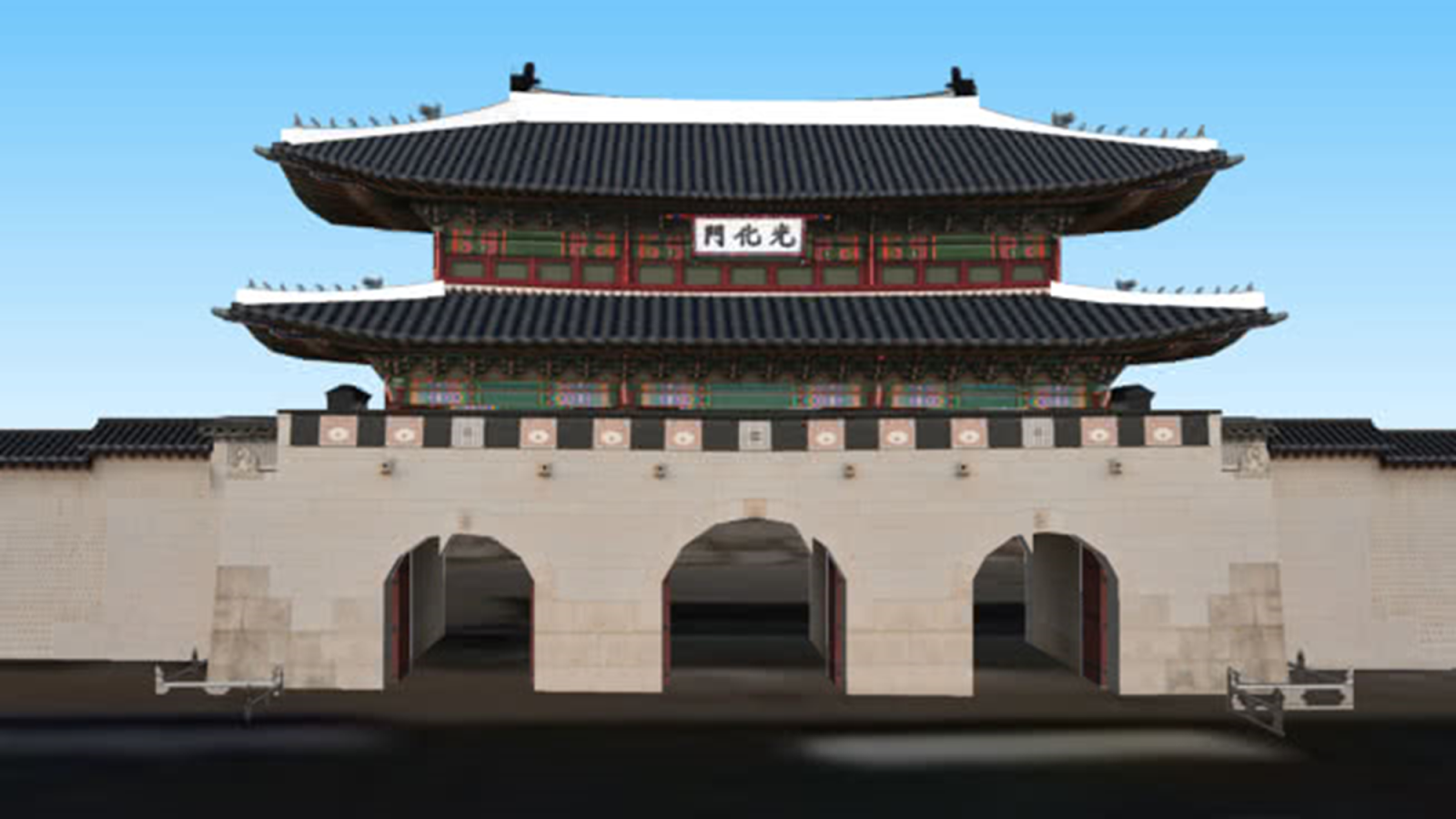










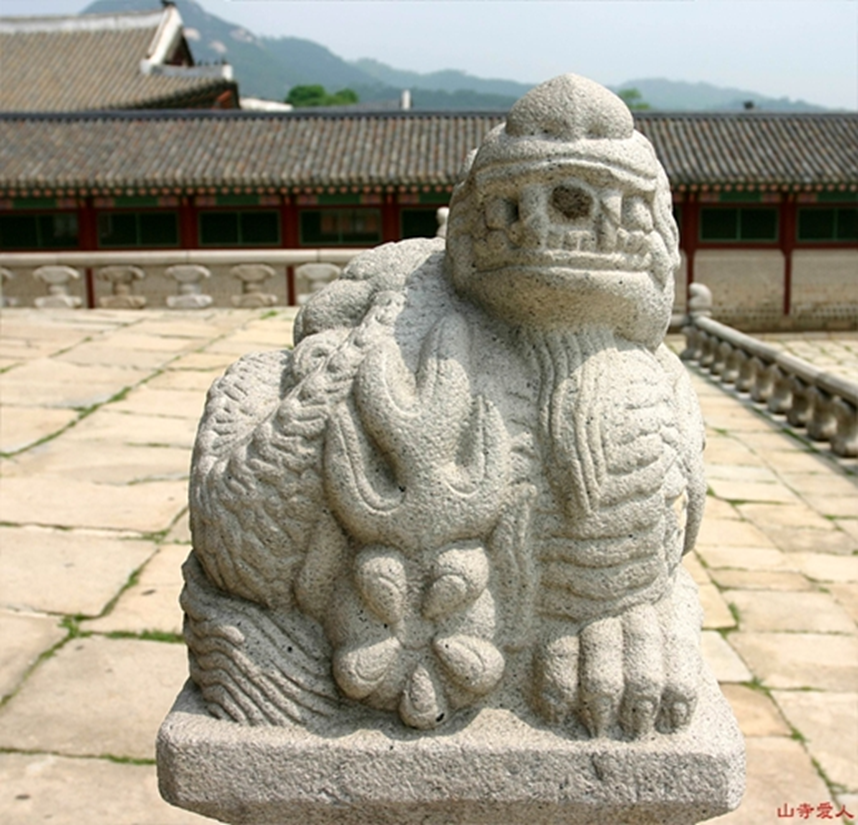


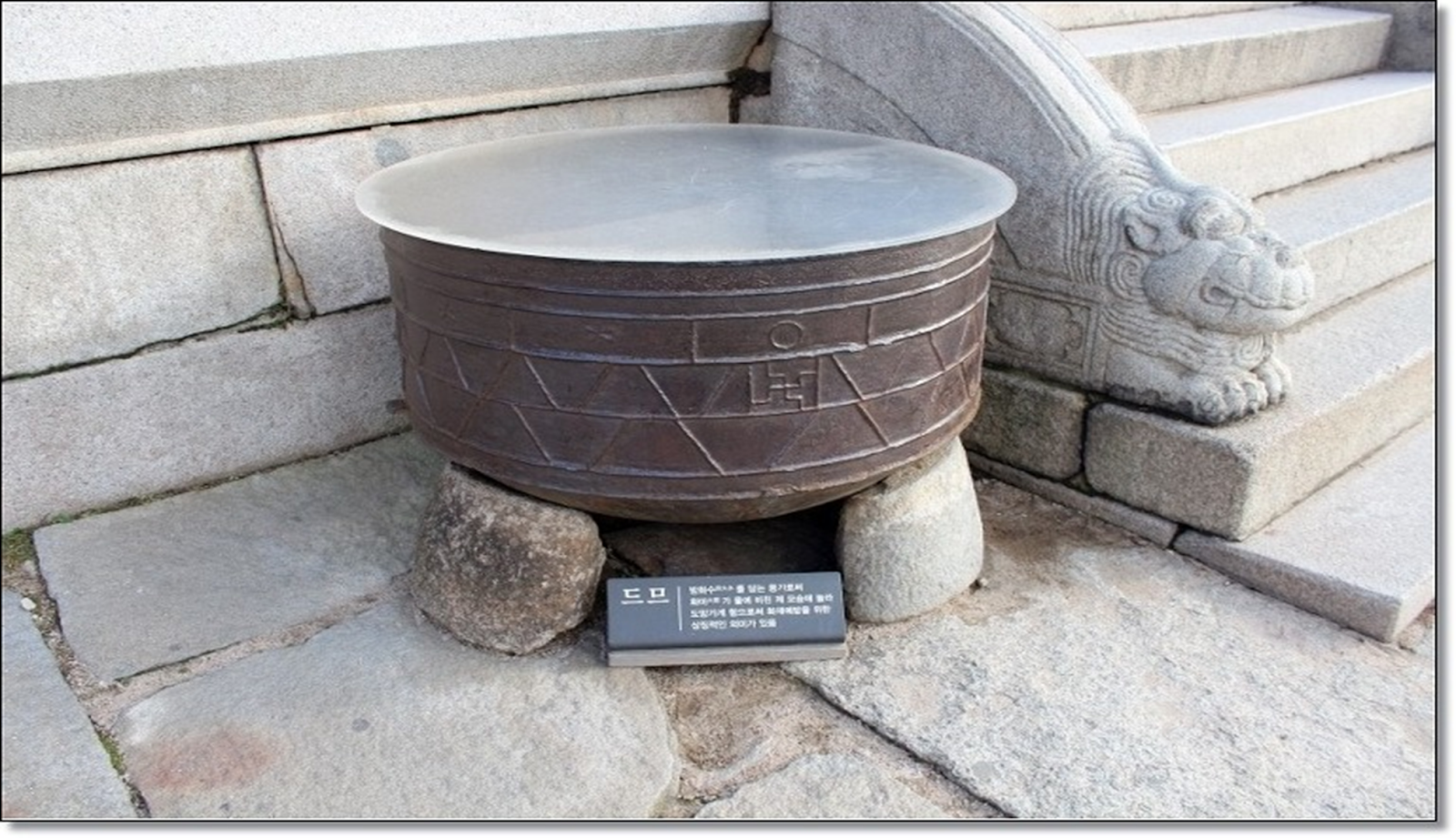
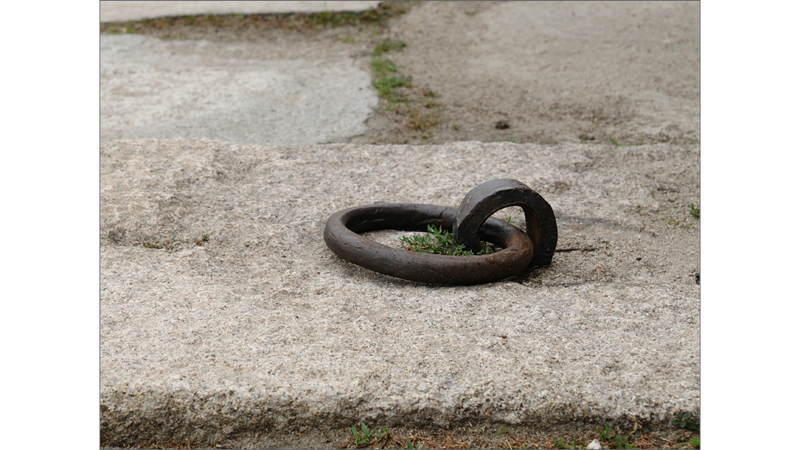






















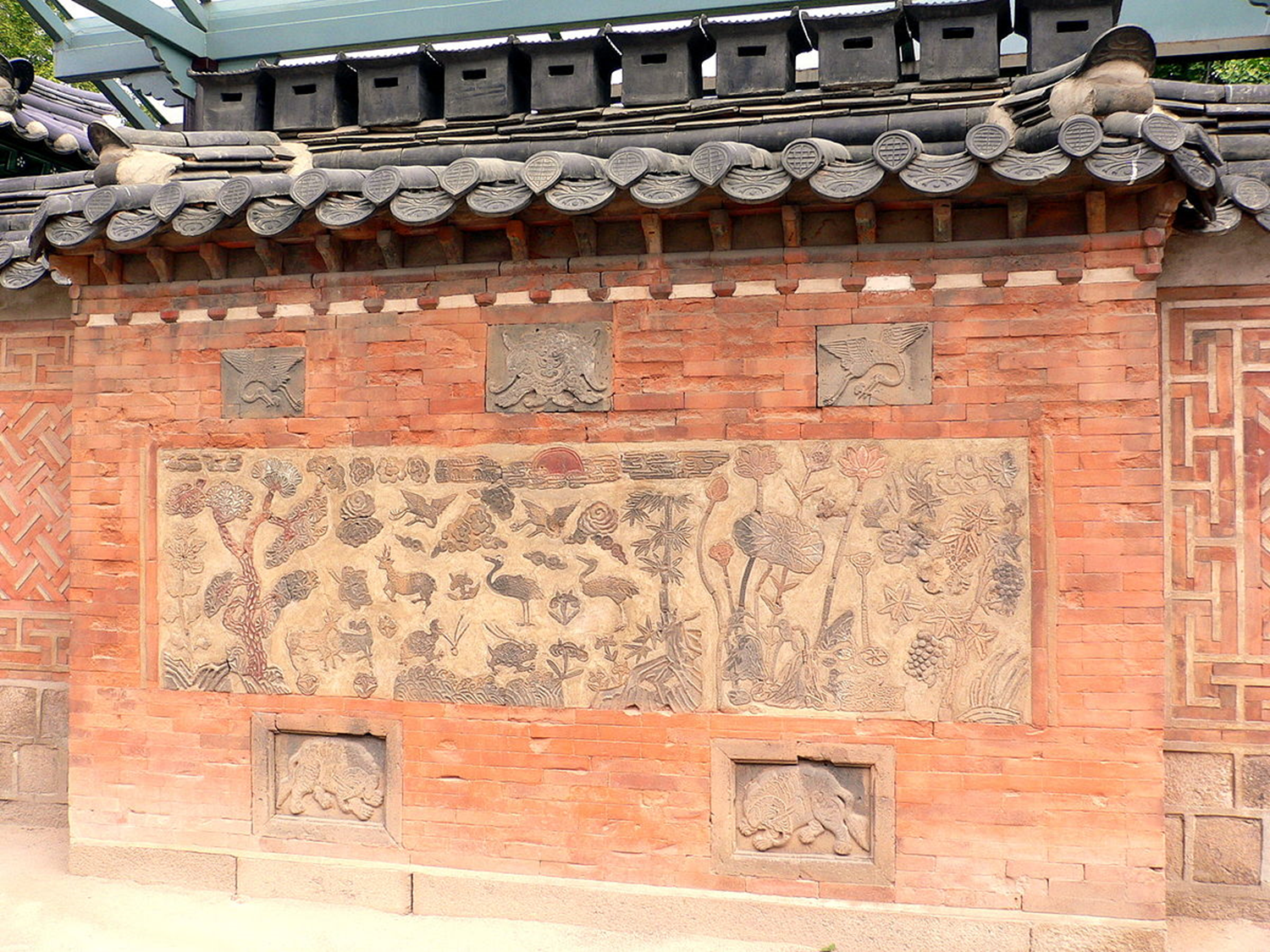

Comments
Post a Comment